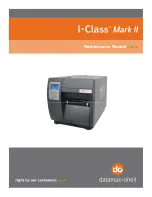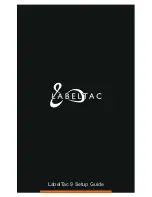
8
OPERATION
1. Have all packing materials and tape been removed from the interior and exterior of the ice
maker?
2. Did you clean the ice storage bin?
3. Have the installation instructions been followed, including connecting the machine to wat
-
er and electricity?
4. Has the machine been leveled?
5.
Is icemaker in location where ambient temperature is higher than 100 F 38 C (see page 6)?
6.
Has the water supply pressure been checked to ensure a minimum of 20 psig(0.14MPa) with
a static pressure not to exceed 120 psig(0.82MPa)?
7.
Is there a clearance of at least 3/4" (2cm) at the rear?
8. Has the power supply voltage been checked or tested against the nameplate rating? And
has proper grounding been installed in the ice maker?
9. Is the ice maker plugged in?
10. Have you turned on the main water supply and tap?
11. Have you checked for leaks at all water supply connections?
Operating method
The ice maker’s on-off switch is just beneath the door. A unit begins to produce ice within 60 minutes
after start-up. Ice production stops automatically when the bucket is full enough to interfere with the
wire shut-off arm. The unit should not be turned “off” with the door closed and ice or water inside.
NOTES:
1. Due to fast freezing, ice cubes may appear “cloudy”. This is trapped air in the water and does
not affect the taste or quality of the ice.
2. “Hollow” ice cubes may result from fast-freezing under certain climatic conditions such as
high humidity, etc. and is not an indication of a problem with the icemaker.
IMPORTANT:
• Although the unit has been tested and cleaned at the factory, due to long-term transit and stor
-
age, the first batch of cubes must be discarded.
• Never turn the water supply tap off when the ice maker is working.
• Never touch evaporator when unit is running!
• Except to take ice from the unit, keep the door closed to reduce melting and insure proper ice
formation.
CLEANING AND MAINTENANCE
Periodic cleaning and proper maintenance will ensure efficiency, top performance, and long life. The
maintenance intervals listed are based on normal conditions. You may want to shorten the intervals if
you have pets, or there are other special considerations.
• Periodically vacuum dust and dirt from the condenser, locate behind the grille at the bottom
front of the unit.
• Regularly inspect plumbing connections to insure that no leaks are present.
What shouldn’t be done:
Never keep anything in the ice storage bin that is not ice: objects like wine and beer bottles are not
sanitary.
IMPORTANT:
• Do not touch the power plug when your hands are wet.
• Never unplug the unit by pulling on the cord. Grasp the plug and pull out firmly.
OPERATION
。
。
[ ]
Final Check List before Operation






























